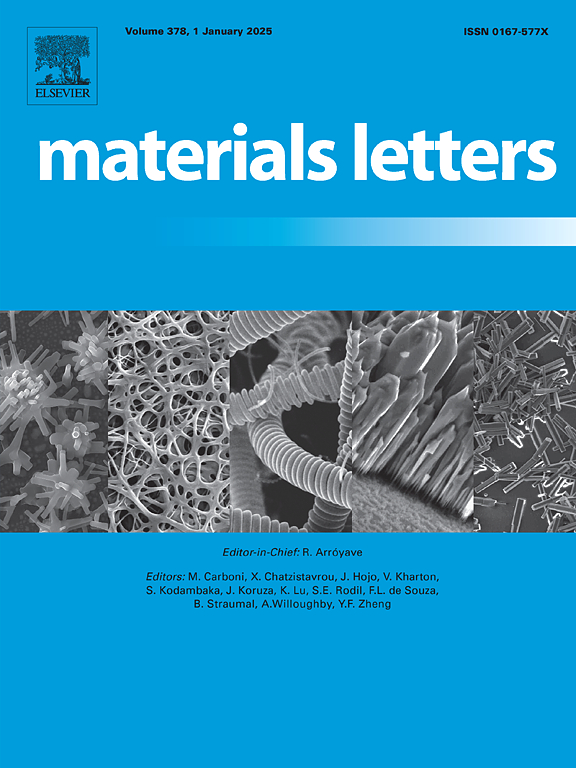Shock wave effect on scandium oxide (Sc2O3) for highly efficient environment remediation application
IF 2.7
4区 材料科学
Q3 MATERIALS SCIENCE, MULTIDISCIPLINARY
引用次数: 0
Abstract
Scandium oxide (Sc2O3), renowned for its exceptional properties, has enticed expressive scientific outfits about its prospective applications in diversified fields, including catalytic applications. In this study, the influence of shock waves on the structure and morphology of Sc2O3 was investigated. Its impact on highly efficient photocatalytic dye degradation applications have also been explored. Through experimental investigations, the role of shock waves in modifying the Sc2O3 structural characteristics has been manifested, with specific emphasis on its surface area, crystallinity, and particle size distribution. Sc2O3, with its altered structural morphology post-shock wave exposure, exhibited improved biocompatibility and surface area, rendering it an attractive candidate for various applications. These properties open avenues for its utilization in drug delivery systems and biocompatible coatings. In photocatalytic dye degradation, the shock wave-induced structural fluctuations in Sc2O3 are harnessed to enhance its photocatalytic performance. The increased surface area and altered crystallinity contributed to enhanced light absorption and more efficient electron-hole pair generation, resulting in superior photocatalytic activity. The findings presented here have the potential to revolutionize the utilization of Sc2O3 in cutting-edge technologies and pave the way for more sustainable and efficient solutions in biotechnology and environmental conservation.
求助全文
约1分钟内获得全文
求助全文
来源期刊

Materials Letters
工程技术-材料科学:综合
CiteScore
5.60
自引率
3.30%
发文量
1948
审稿时长
50 days
期刊介绍:
Materials Letters has an open access mirror journal Materials Letters: X, sharing the same aims and scope, editorial team, submission system and rigorous peer review.
Materials Letters is dedicated to publishing novel, cutting edge reports of broad interest to the materials community. The journal provides a forum for materials scientists and engineers, physicists, and chemists to rapidly communicate on the most important topics in the field of materials.
Contributions include, but are not limited to, a variety of topics such as:
• Materials - Metals and alloys, amorphous solids, ceramics, composites, polymers, semiconductors
• Applications - Structural, opto-electronic, magnetic, medical, MEMS, sensors, smart
• Characterization - Analytical, microscopy, scanning probes, nanoscopic, optical, electrical, magnetic, acoustic, spectroscopic, diffraction
• Novel Materials - Micro and nanostructures (nanowires, nanotubes, nanoparticles), nanocomposites, thin films, superlattices, quantum dots.
• Processing - Crystal growth, thin film processing, sol-gel processing, mechanical processing, assembly, nanocrystalline processing.
• Properties - Mechanical, magnetic, optical, electrical, ferroelectric, thermal, interfacial, transport, thermodynamic
• Synthesis - Quenching, solid state, solidification, solution synthesis, vapor deposition, high pressure, explosive
 求助内容:
求助内容: 应助结果提醒方式:
应助结果提醒方式:


